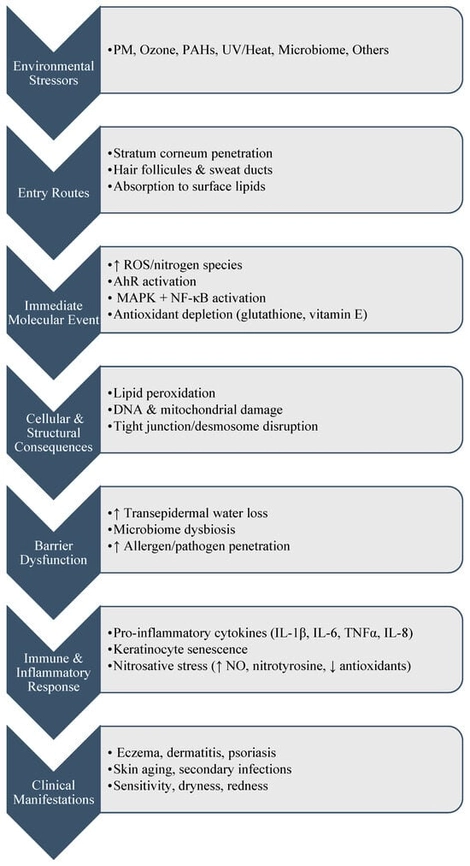- Review
The Environmental Determinants of Skin Health: Linking Climate Change, Air Pollution, and the Dermatologic Disease Burden
- Tarek Zieneldien,
- Sophia Ma and
- Isabella J. Tan
- + 3 authors
Climate change has a widespread impact on health across the continuum, influencing skin disease patterns, access to dermatologic care, and the burden of climate-sensitive conditions. Environmental changes driven by climate change impact the skin’s ability to maintain homeostasis, contributing to the onset and exacerbation of various dermatologic diseases. Psoriasis, acne vulgaris, atopic dermatitis, photoaging, melasma, and skin cancers have been associated with repeated exposure to rising levels of pollutants. Furthermore, the depletion of the stratospheric ozone layer has contributed to an elevated risk of developing skin cancer—including melanoma, basal cell carcinoma, and squamous cell carcinoma—due to increased exposure to ultraviolet radiation. Notably, while melanoma is linked to intense, intermittent UV exposure and sunburns, basal cell and squamous cell carcinomas are more strongly associated with cumulative or chronic sun exposure over a lifetime. According to the World Health Organization, air pollution contributes to more than 700,000 premature deaths each year, and a 1% decrease in ozone thickness corresponds with a 2% rise in melanoma incidence. This review also identifies research gaps, such as limited longitudinal studies, underrepresentation of pediatric and elderly populations, and limited exploration of nitrosative stress mechanisms. Due to these factors, practitioners should be aware of both the current and projected impacts of climate change in their regions to effectively identify and manage associated conditions and exacerbations.
4 December 2025







